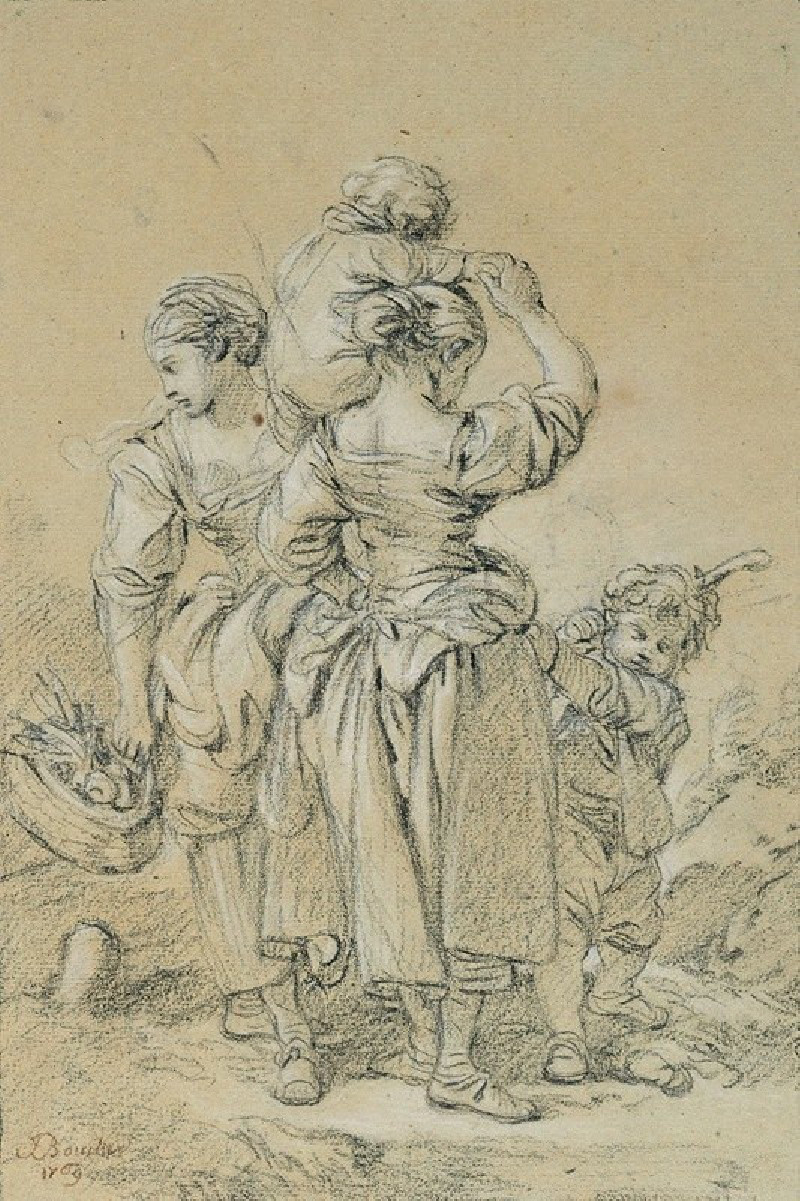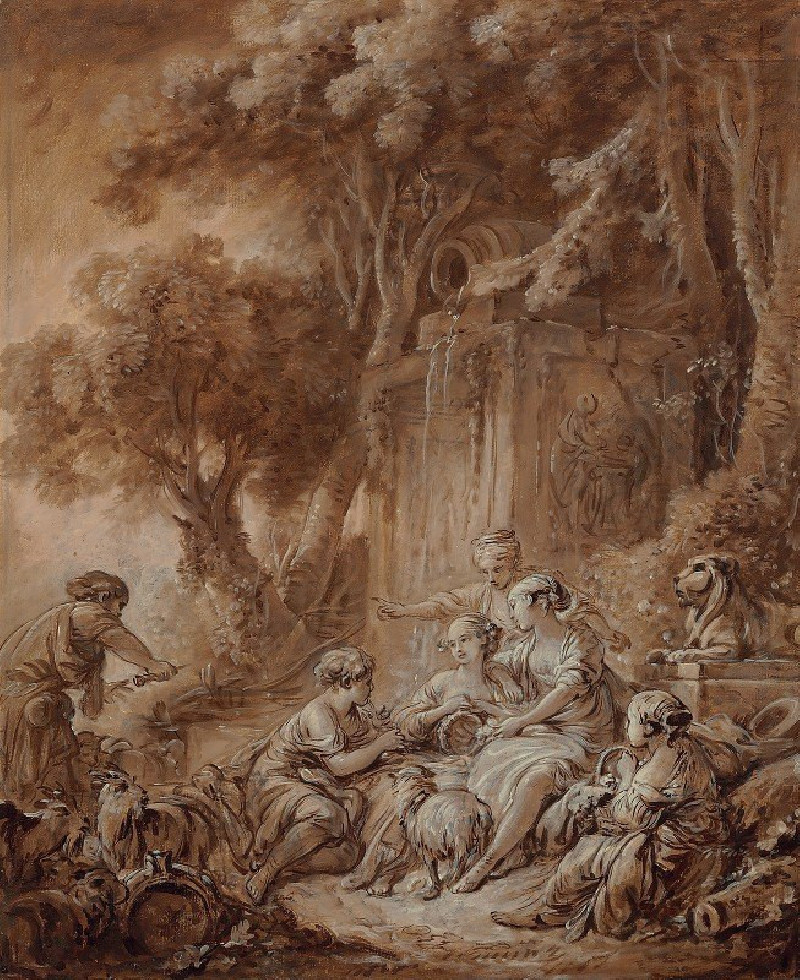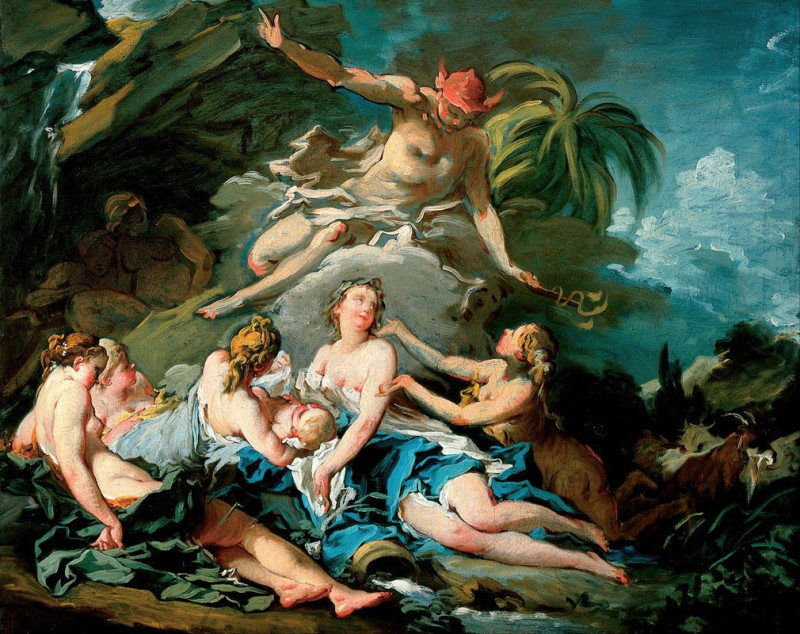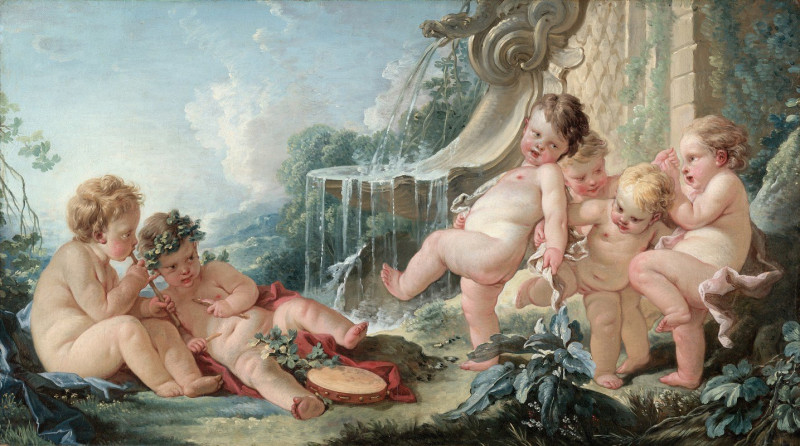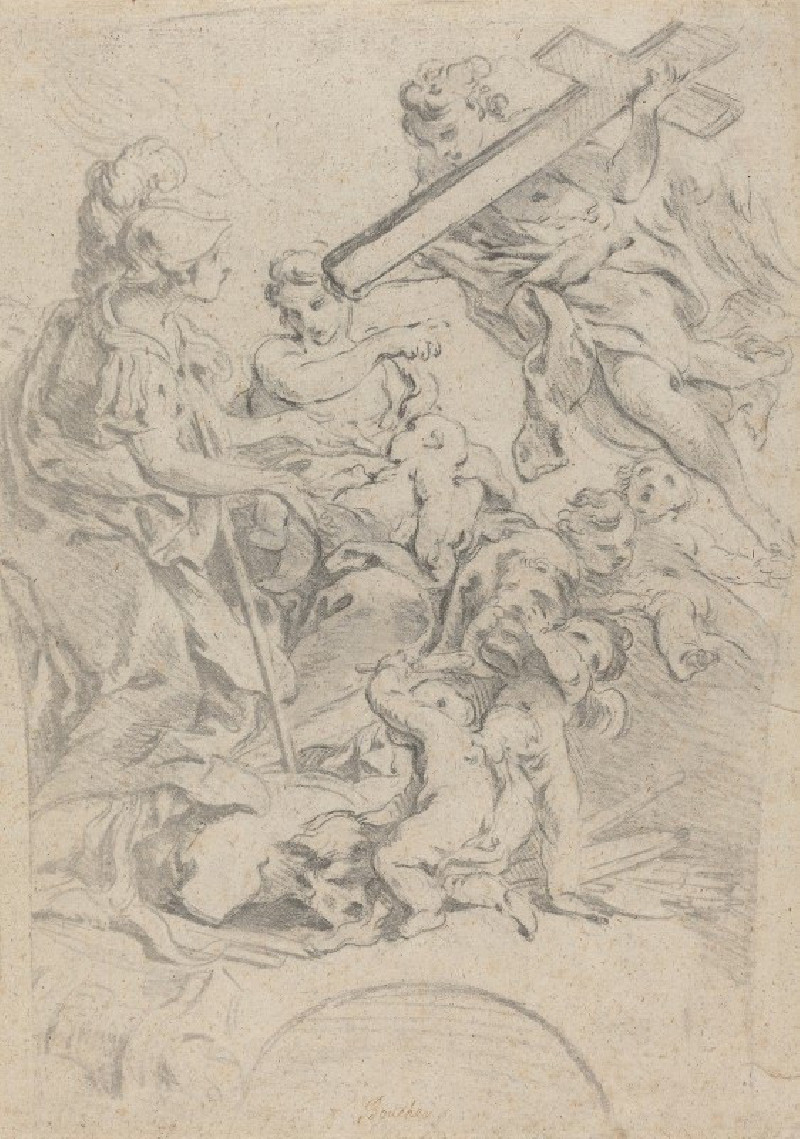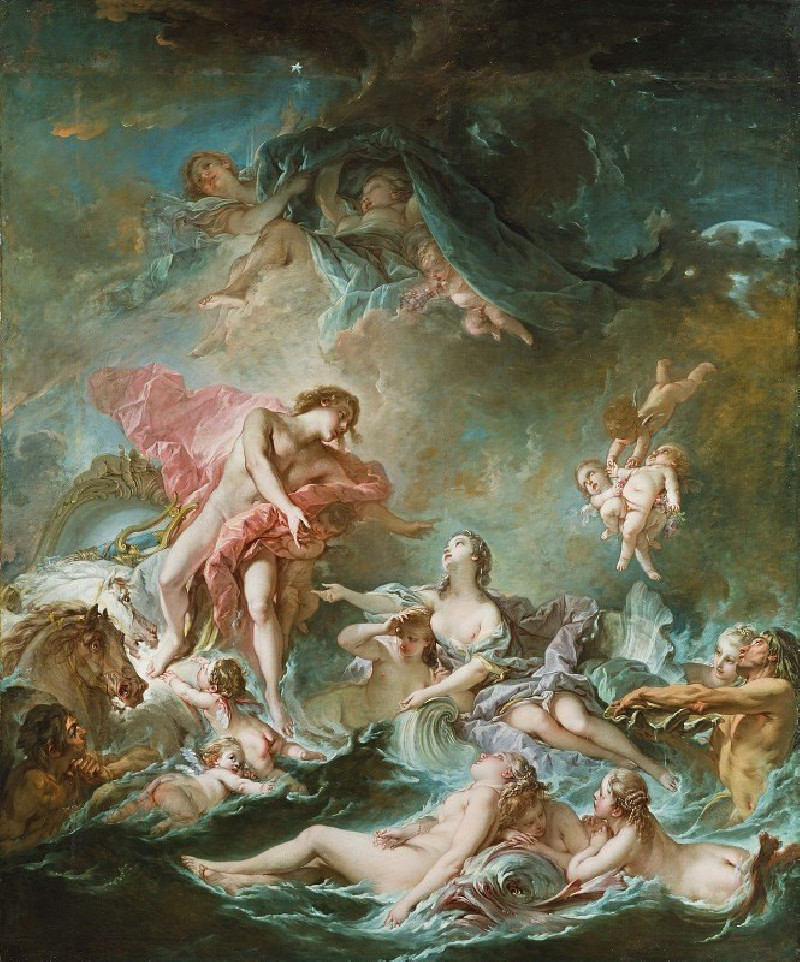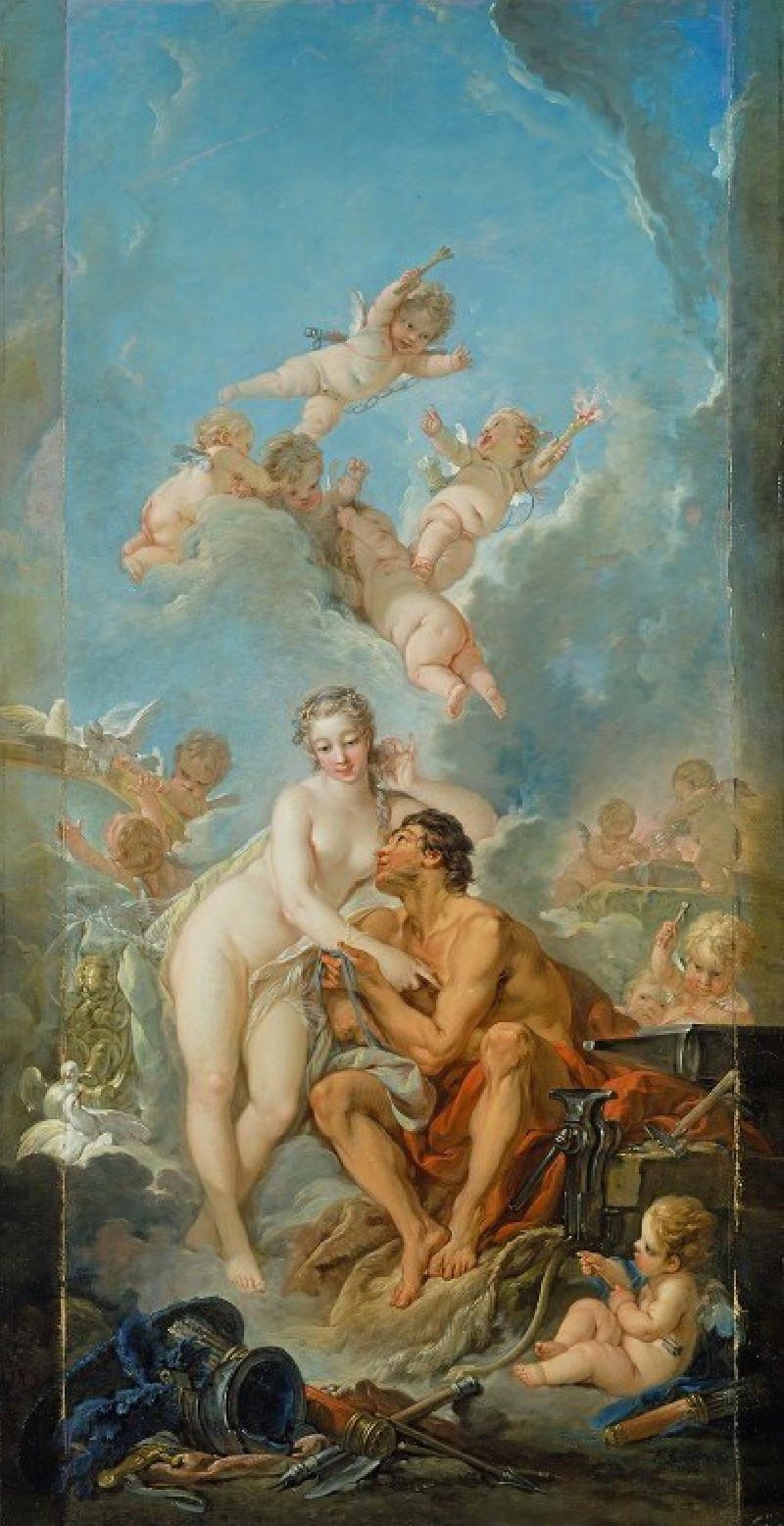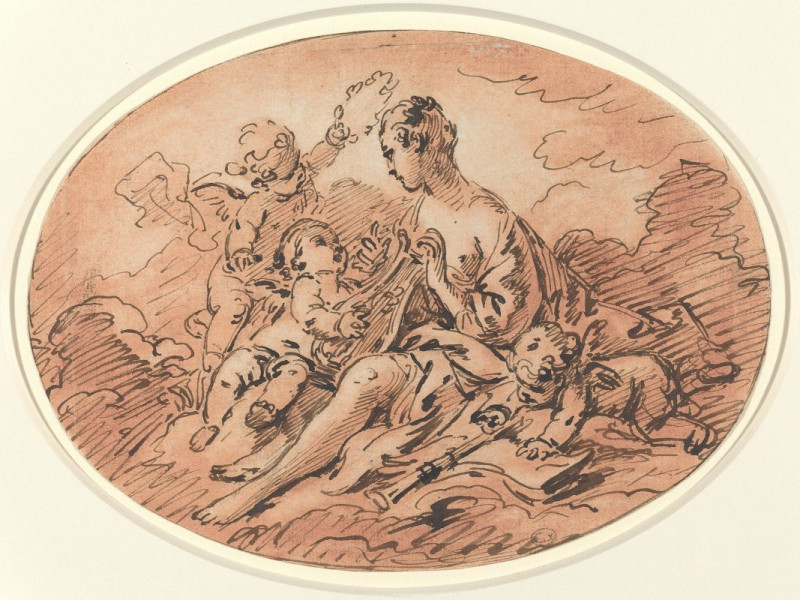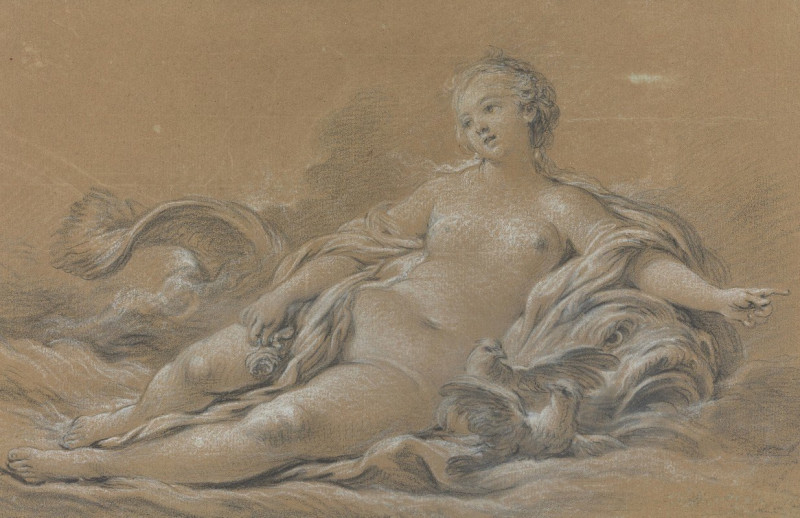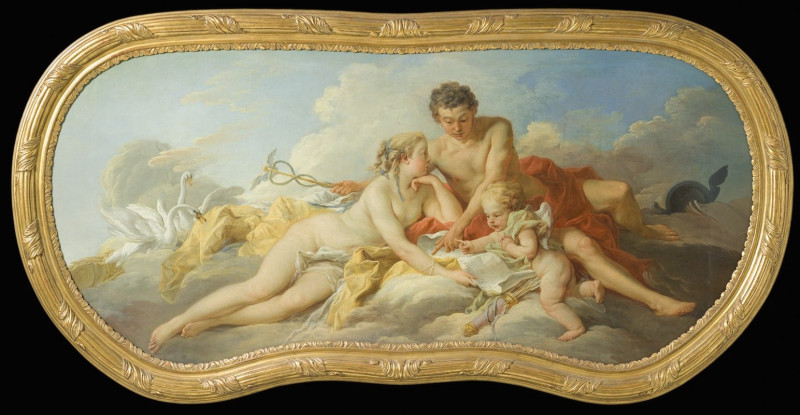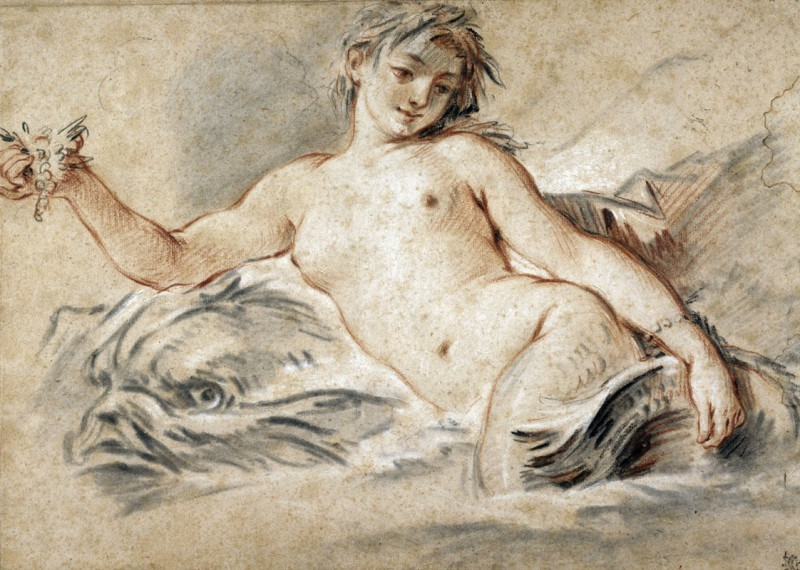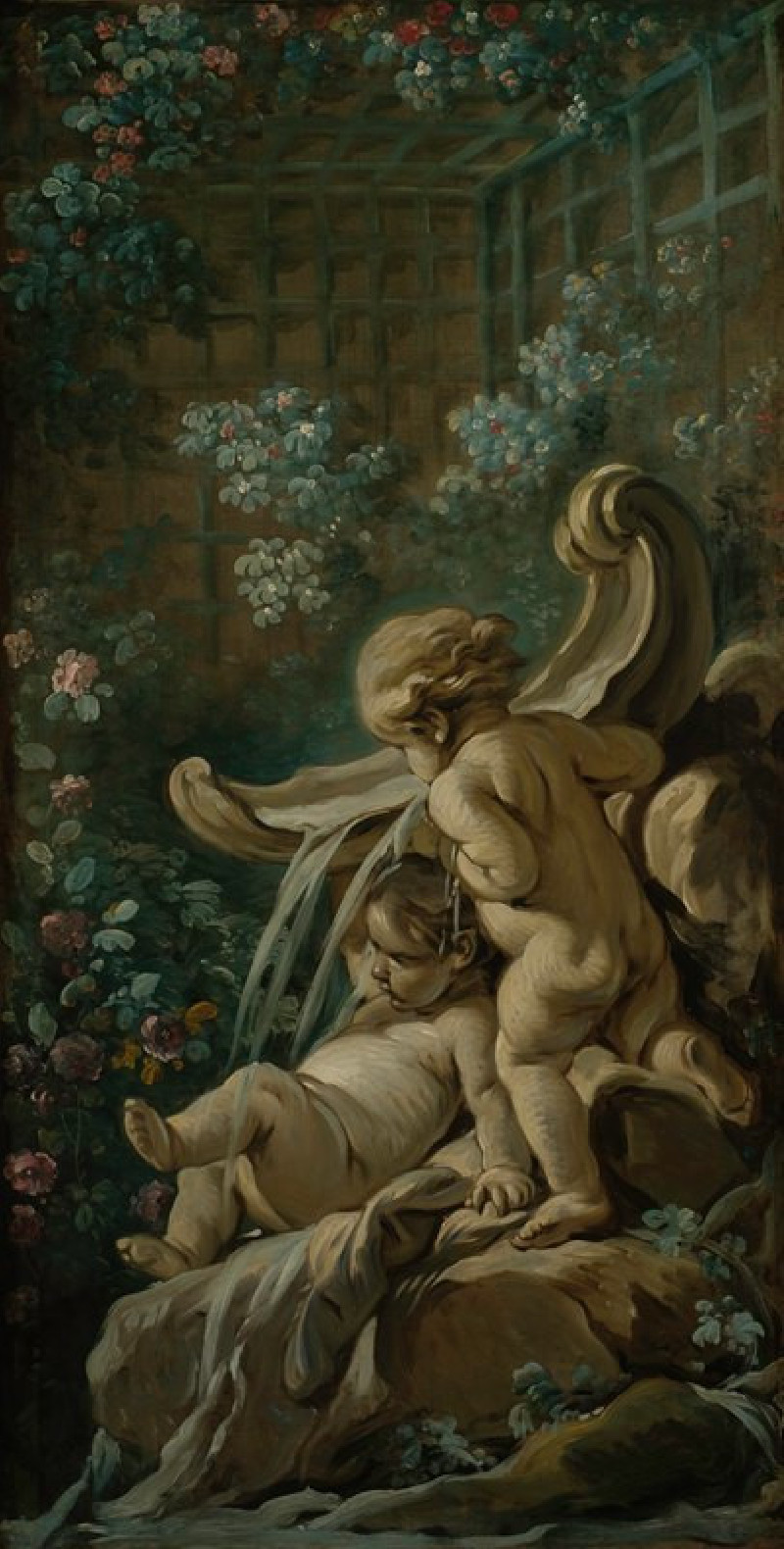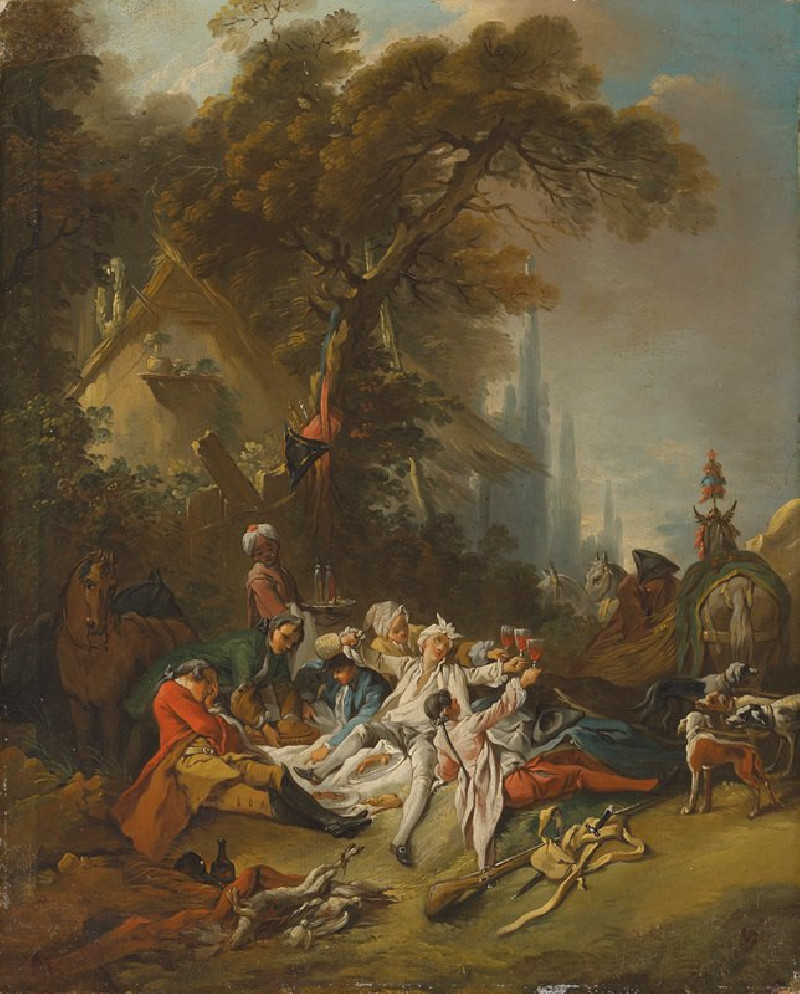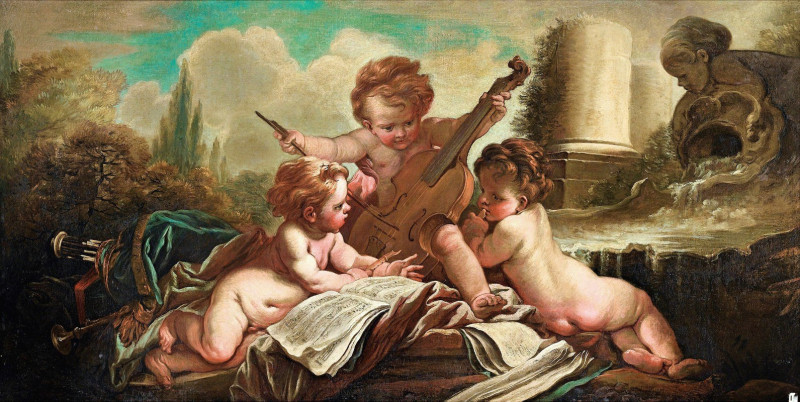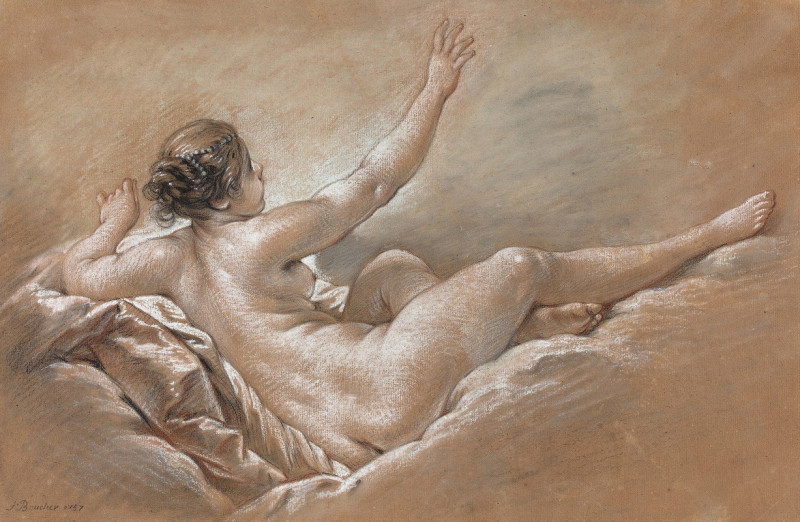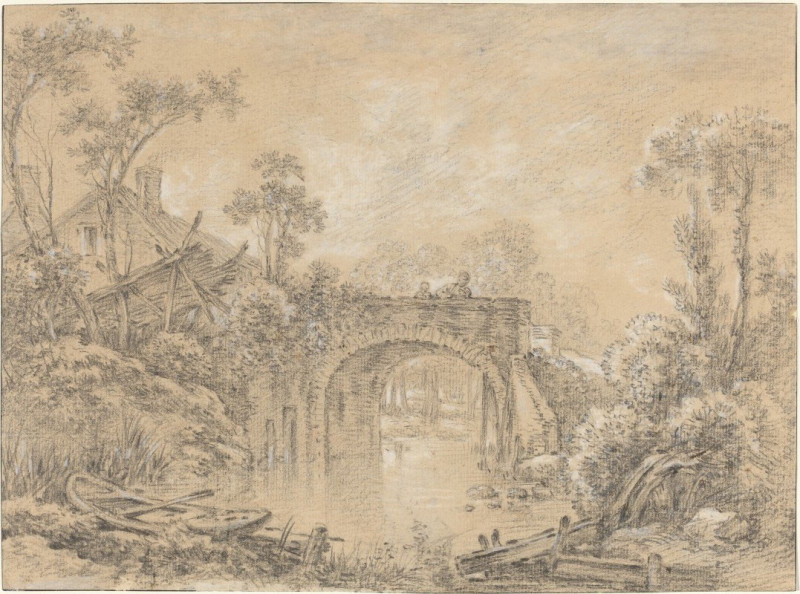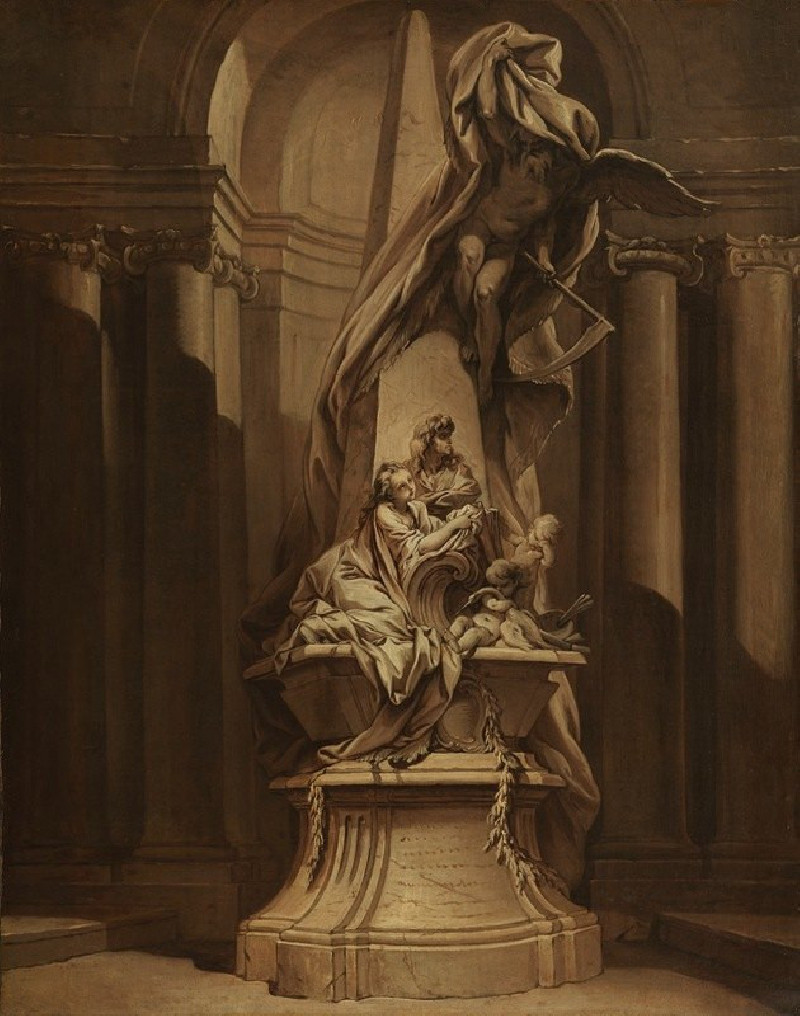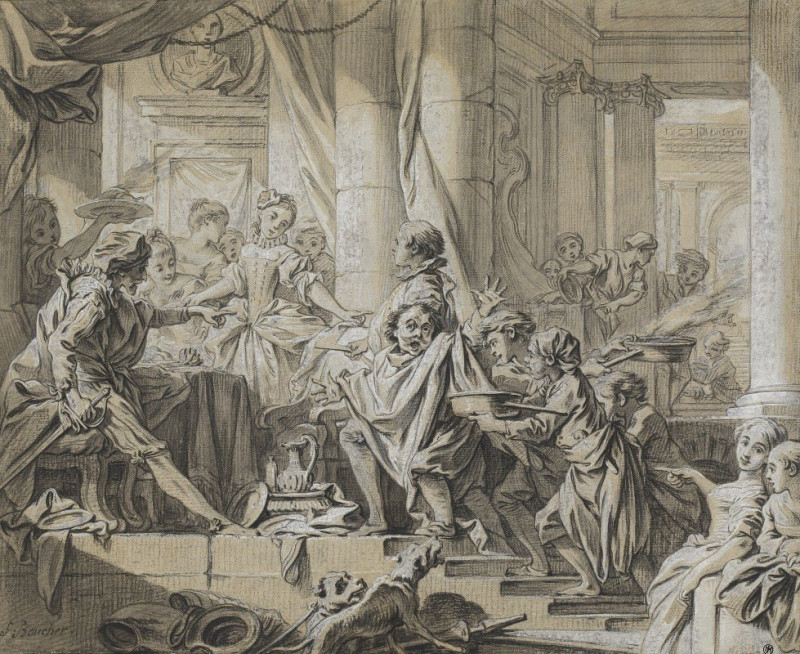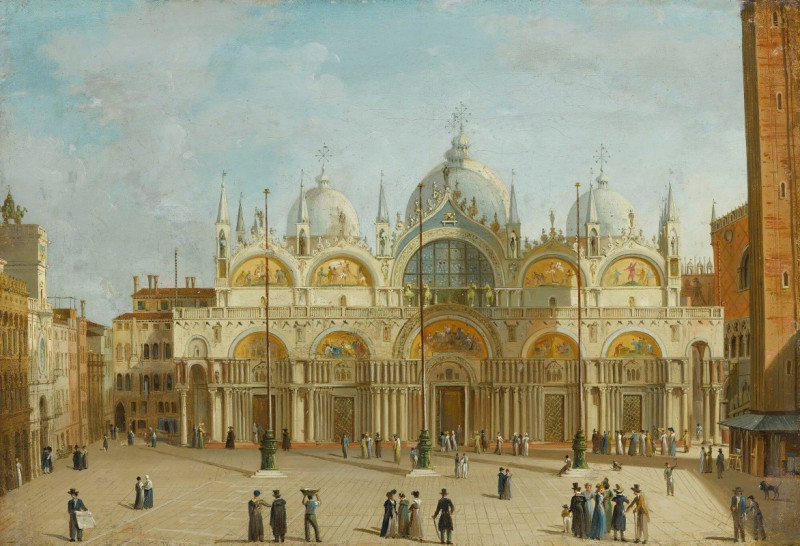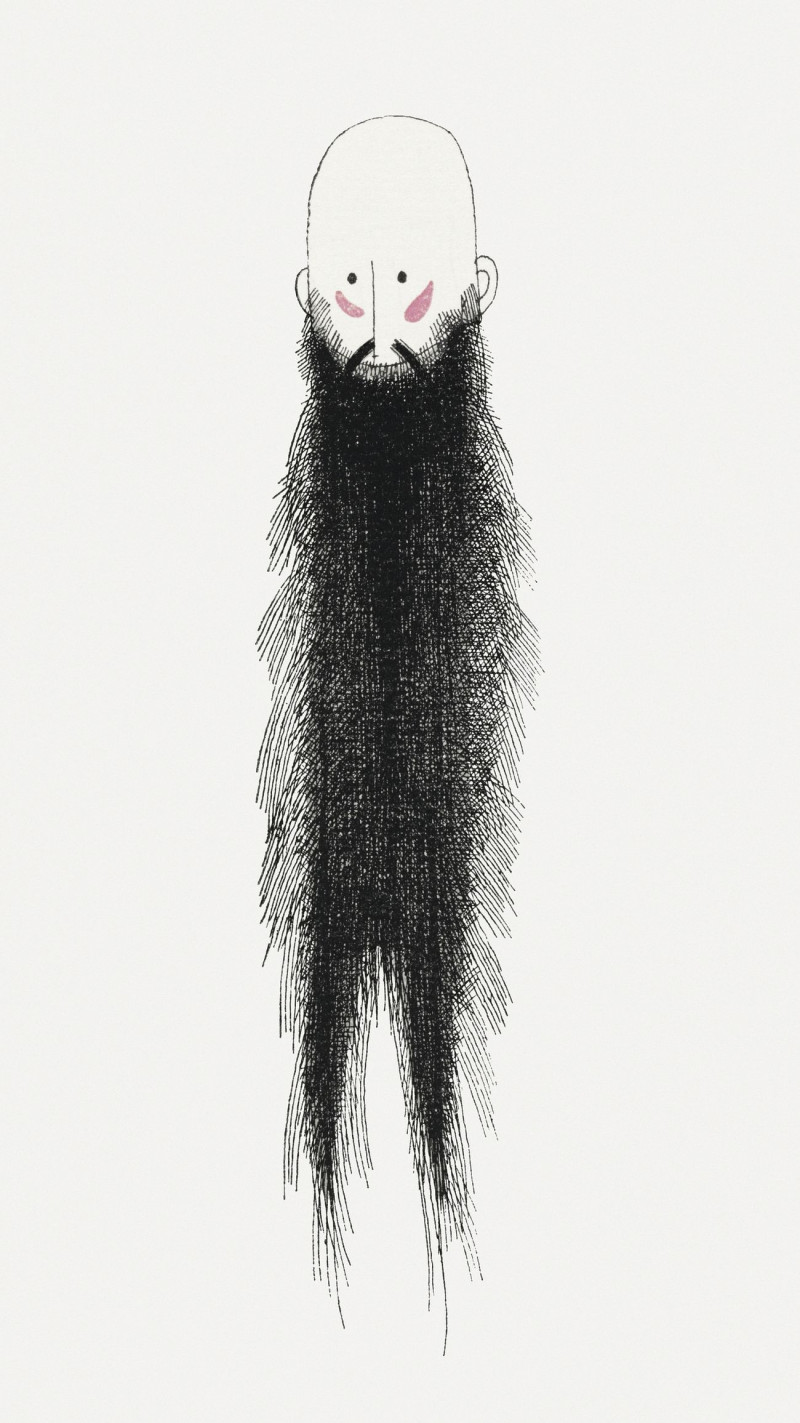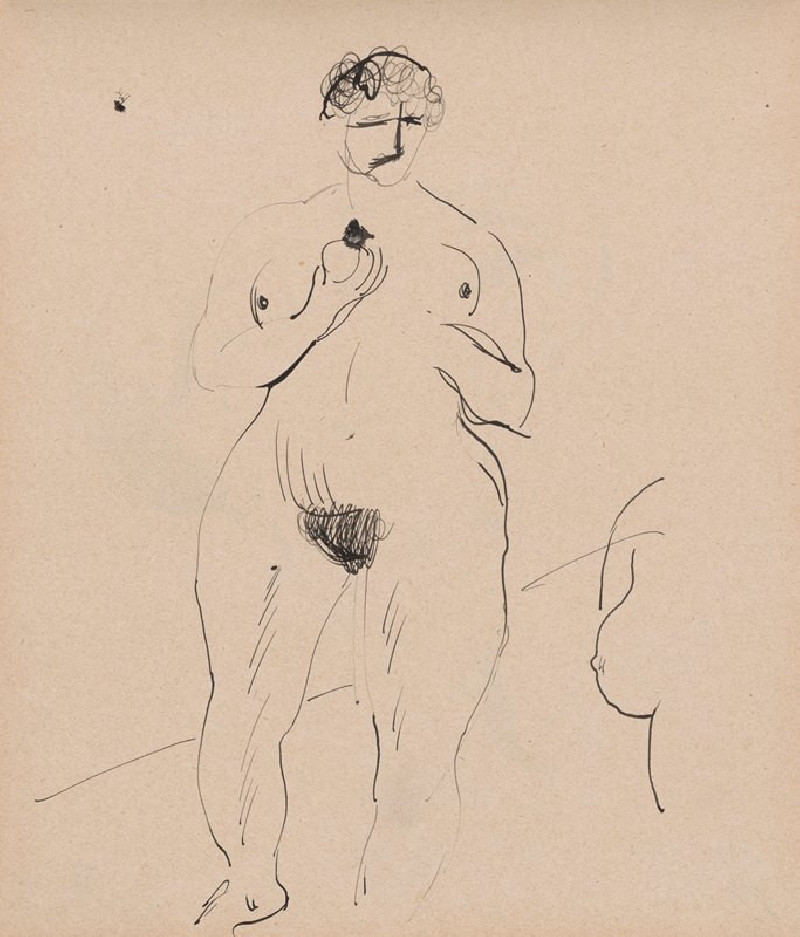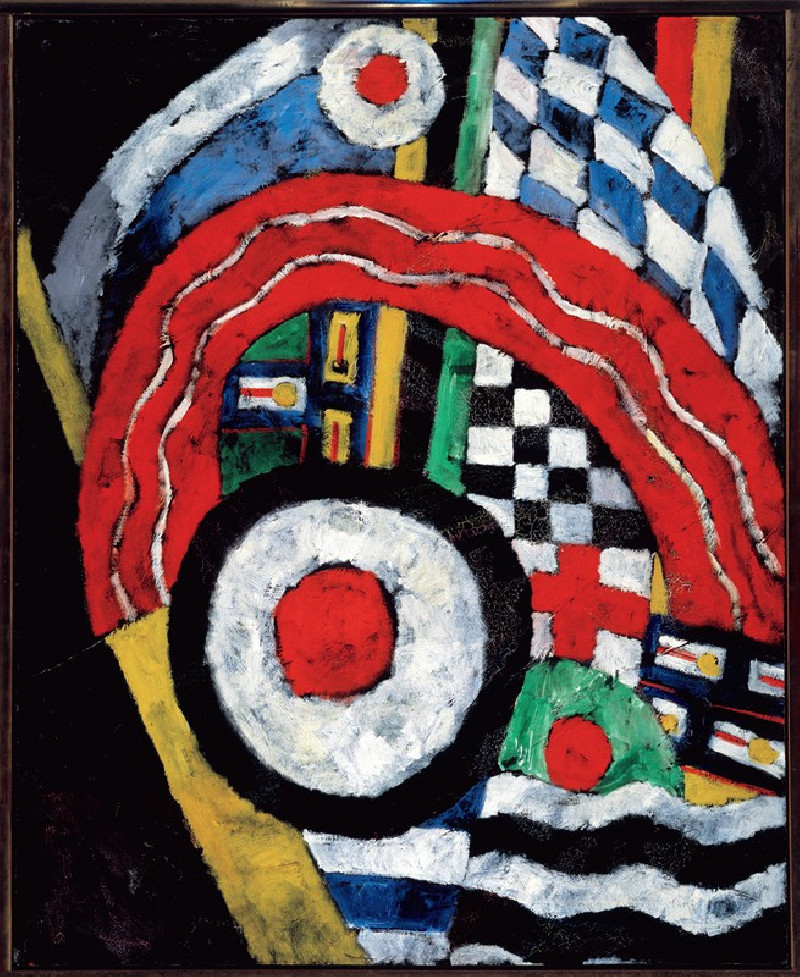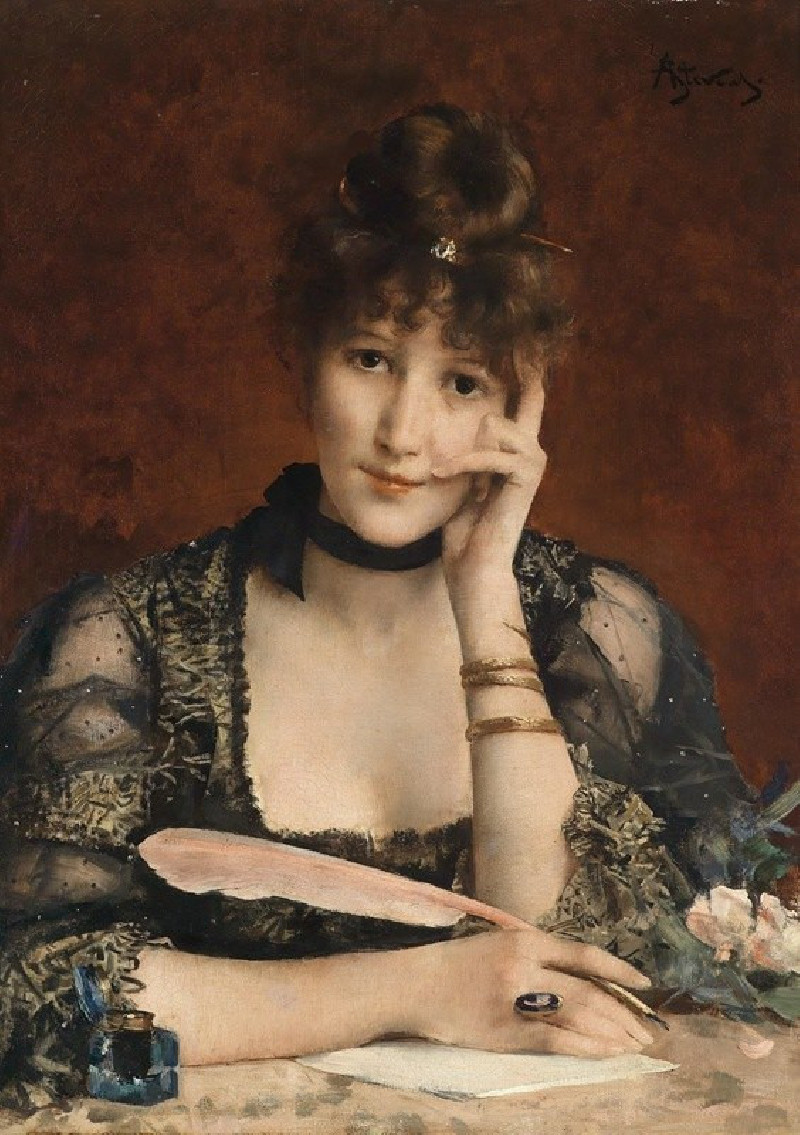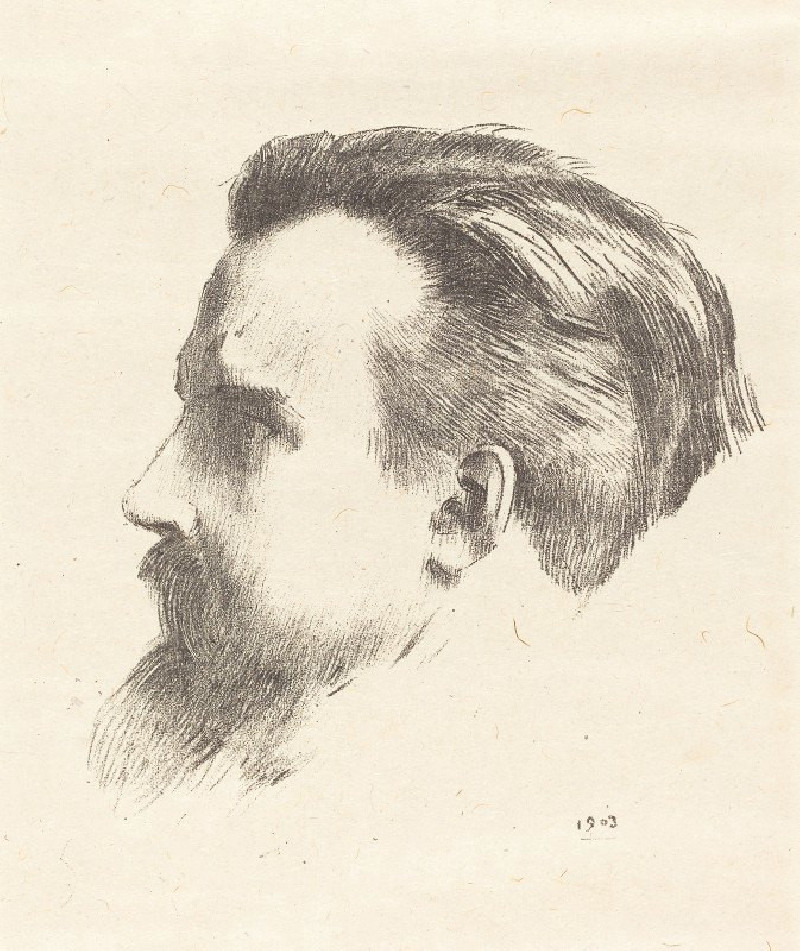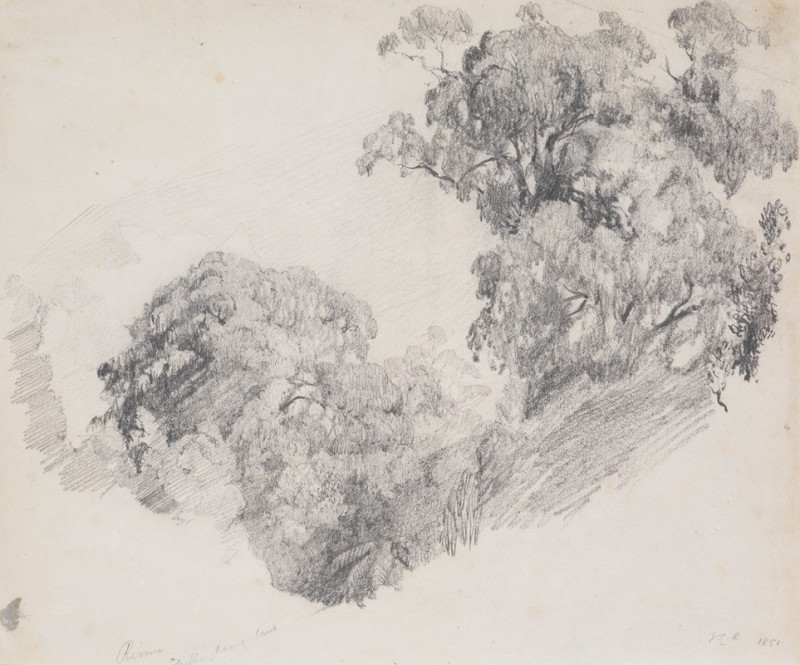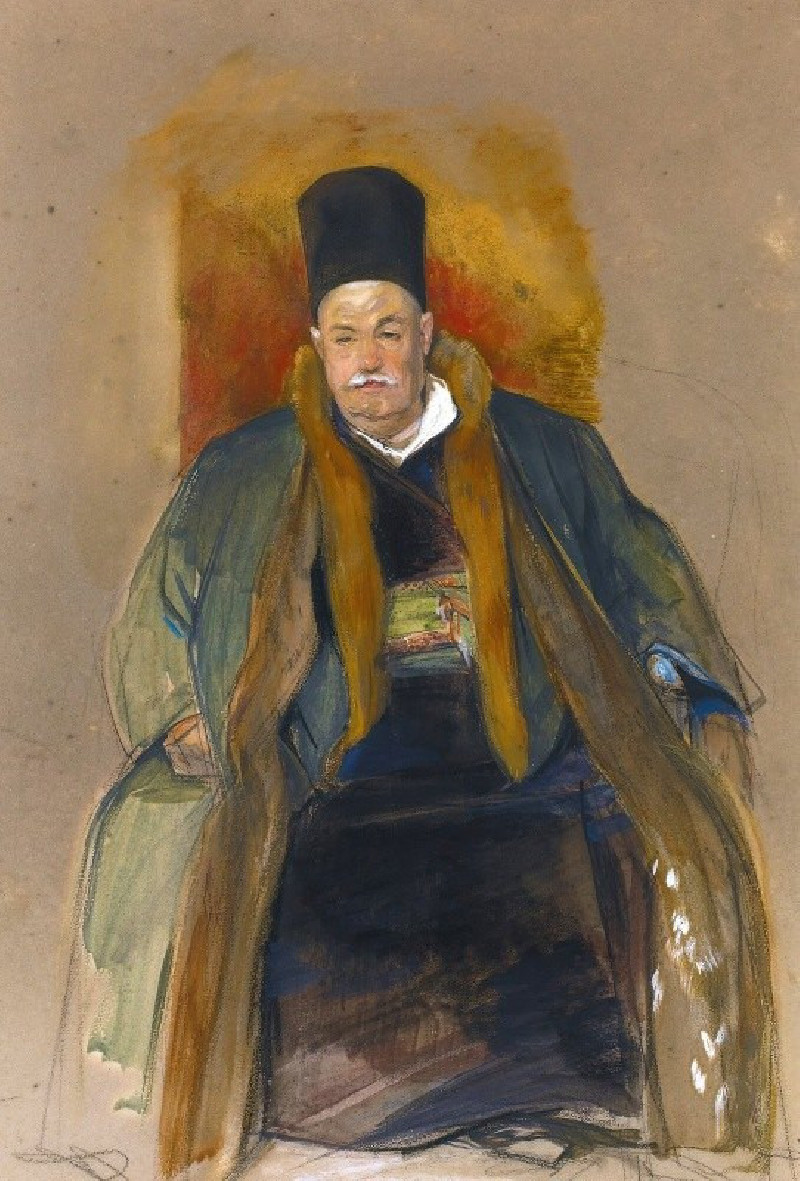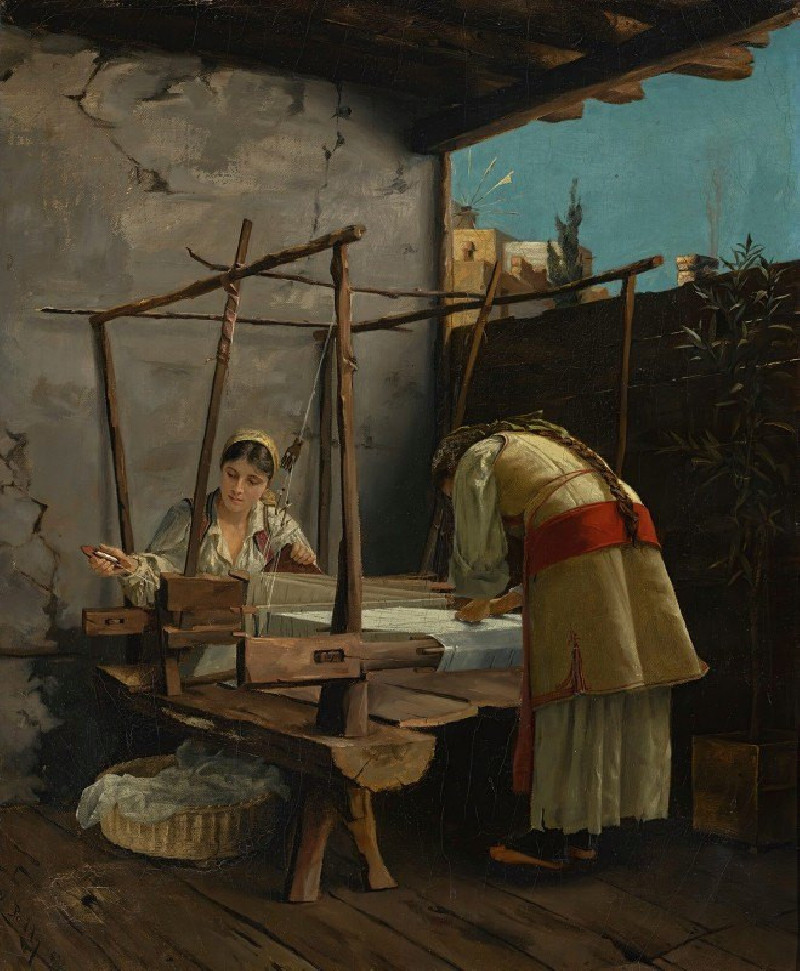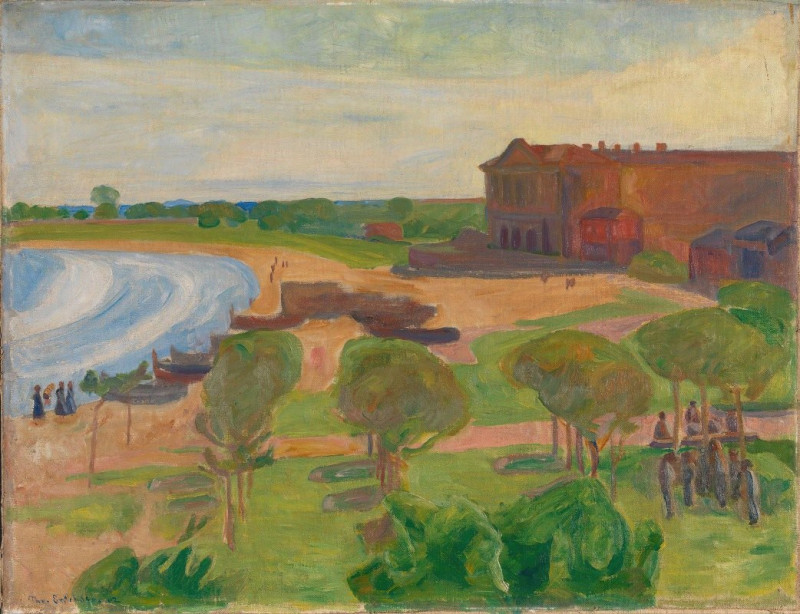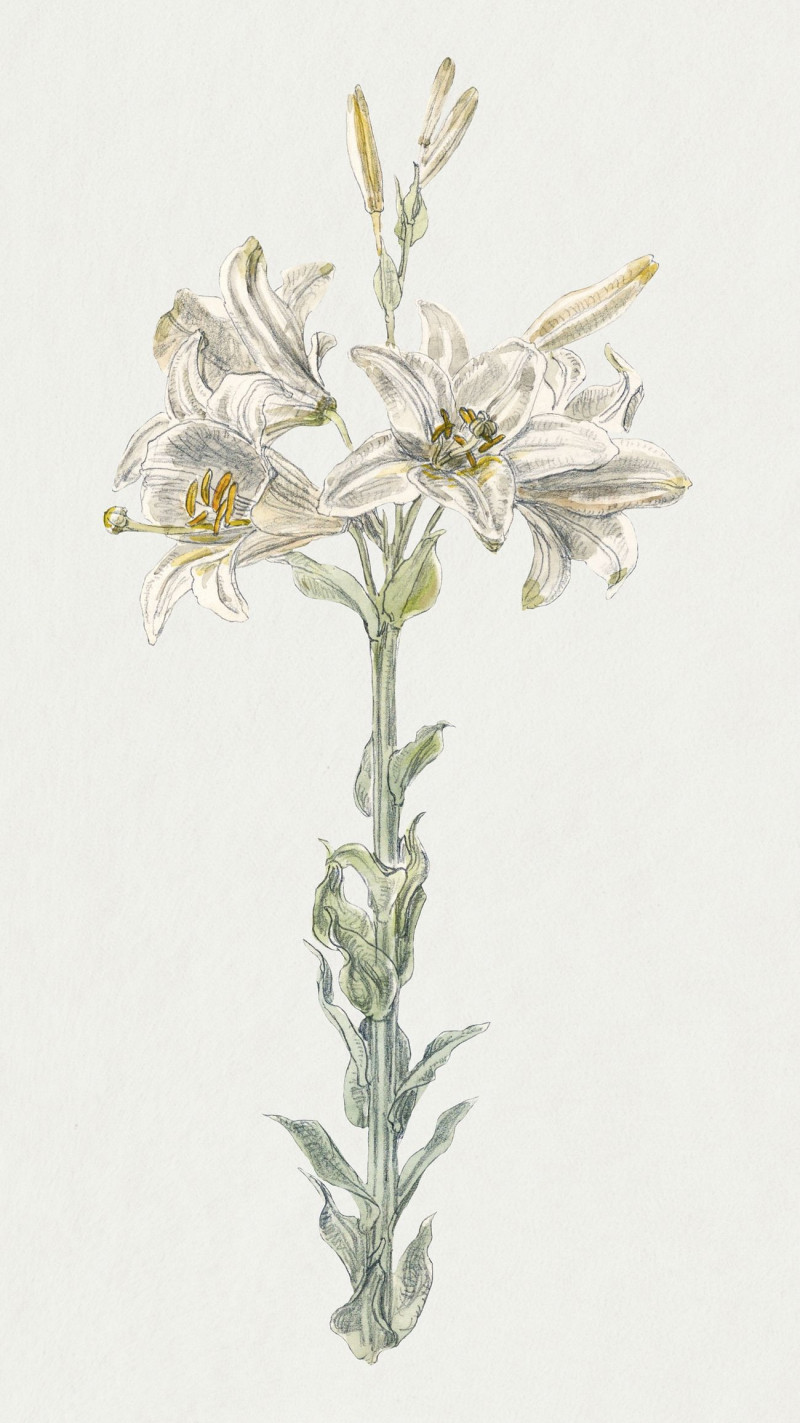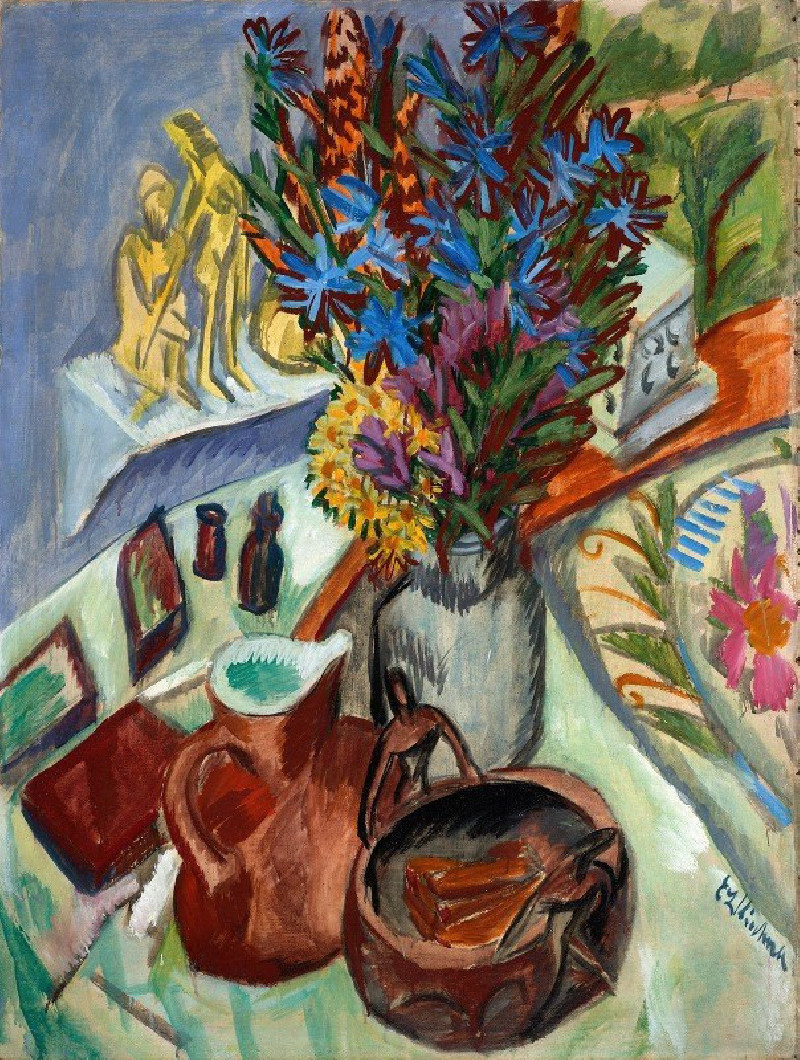Deux femmes et deux enfants (1769)
Technique: Giclée quality print
Recommended by our customers
More about this artwork
François Boucher's mastery of the Rococo style shines brightly in his captivating sketch, "Deux femmes et deux enfants," created in 1769. This drawing warmly portrays the everyday life and intimate moments of the 18th century through its depiction of two women and two children engaging in seemingly mundane yet deeply relational activities.The artwork illustrates one woman adjusting her hair, capturing a moment of personal care and perhaps preparation for the day or a special event, while the other woman, bearing a calm and attentive gaze, appears to be assisting or simply sharing the moment. Two young children accompany them, adding a lively and innocent charm to the scene. One child, playfully leaning against one of the women, while the other, carried on a woman's back, adds a dynamic of care and nurturing that resonates with the viewer.Boucher's use of soft yet precise pencil strokes conveys a gentle yet detailed look, emphasizing the flowing garments and graceful postures of his figures. The artwork not only reflects the fashion and social customs of the time but also Boucher's keen ability to infuse the Rococo love of beauty, ornateness, and elegance into everyday life representations.This drawing, while simple compared to Boucher's more elaborately colored works, offers an intimate glance into the social and familial bonds of its time, portrayed with all the tenderness and fineness characteristic of Boucher's art.
Delivery
Returns
François Boucher (1703–1770) was a French painter, engraver, illustrator and printmaker. He was a proponent of Rococo and had a huge influence in spreading the style throughout Europe. His art was idyllic and voluptuous with a high-toned palette of blues and pinks. He created designs for all decorative arts, porcelains and tapestries. Boucher also painted several portraits including his patroness Madame de Pompadour. He is one of the most celebrated decorative artists of the 18th century.

